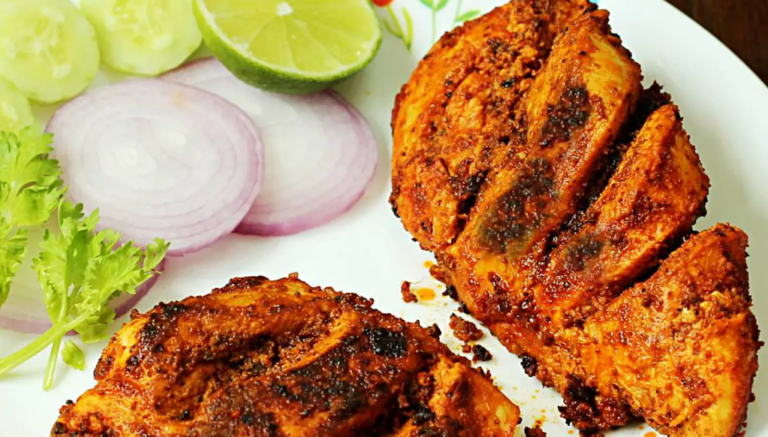
Tandoori Dishes: Tandoori chicken, with its smoky and charred flavors, is a North Indian classic. Marinated in yogurt and spices, then cooked in a clay oven, it’s a must-try for meat lovers.
- It is believed to have originated in the Punjab region of India.
- The name “tandoori” comes from the tandoor oven.
- Tandoori chicken is a popular dish in many countries around the world, including the United States, the United Kingdom, and Canada.
Mughlai Delicacies: The Mughals left their mark on Indian cuisine with rich and creamy dishes like butter chicken, a tomato-based curry with tender pieces of chicken, and biryani, a fragrant rice dish layered with meat or vegetables.
Lentil-based Curries: Dal makhani, a black lentil curry simmered in a creamy tomato sauce, is a vegetarian favorite, while chana masala, made with chickpeas and spices, is another popular choice.
Dosa: This thin, crispy crepe made from fermented rice and lentil batter is a South Indian staple, often served with sambar, a lentil and vegetable stew, and coconut chutney
Idli: Fluffy, steamed rice cakes are another healthy and delicious South Indian breakfast option
Vada: Savory fritters made from lentils or potatoes are popular snacks or accompaniments to meals
Samosa: These deep-fried pastry triangles filled with spiced potatoes and peas are a ubiquitous street food, enjoyed across India.
Gujarati Specialties: Dhokla, a savory steamed chickpea cake, and khakra, thin rice crackers, are some of the highlights of Gujarati cuisine.
Rajasthani Delights: Laal maas, a fiery lamb curry, and dal bati churma, a dish made with lentils, roasted bread, and ghee, are examples of Rajasthani flavors.
Bengali Fish Curries: Macher Jhol, a mustard-flavored fish curry, and Chingri Malai Curry, a coconut milk-based prawn curry, are popular Bengali dishes.
Bengali fish curries are a true symphony of flavors, aromas, and textures, showcasing the region’s deep affection for seafood and its masterful use of spices.
Momos: These Tibetan-inspired steamed dumplings, filled with minced meat or vegetables, are a favorite street food in the eastern states.
Origins: Contrary to popular belief, momos aren’t native to Eastern India. Their ancestry traces back to Tibet, where they’ve been a staple food for centuries. The dumplings, called “gyoza” in Tibetan, are traditionally filled with yak meat or vegetables like cabbage and onions. They’re steamed or pan-fried, creating a contrasting texture of soft dough and juicy filling
Payasam: Sweet rice pudding flavored with nuts, fruits, and spices is a popular South Indian dessert.
Jalebi: Deep-fried crispy dough spirals soaked in syrup are a classic Indian sweet treat
- The science behind Jalebi: Ever wondered how jalebi get their unique shape and texture? I can delve into the fascinating science behind the batter, frying technique, and syrup consistency that make jalebi so special.
- Regional variations: Jalebi, like many Indian dishes, isn’t a monolithic treat. Different regions have their own twists and turns on the classic recipe. I can tell you about some interesting variations, from rose-scented jalebi to savory versions filled with spiced potatoes.
Gulab Jamun: Soft, spongy milk dumplings in a rosewater syrup are another beloved dessert.
- The history of Gulab Jamun: Did you know this sweet treat has a rich history dating back centuries? I can tell you about its origins and how it evolved into the popular dessert we know today.
- Regional variations of Gulab Jamun: This beloved dessert isn’t just one-dimensional! Different regions in India have their own unique takes on Gulab Jamun, using different ingredients and cooking methods. I can share some interesting examples.